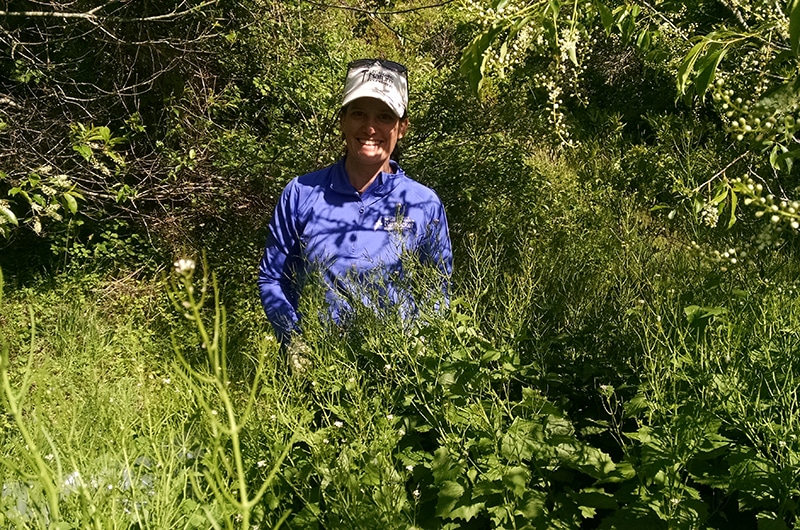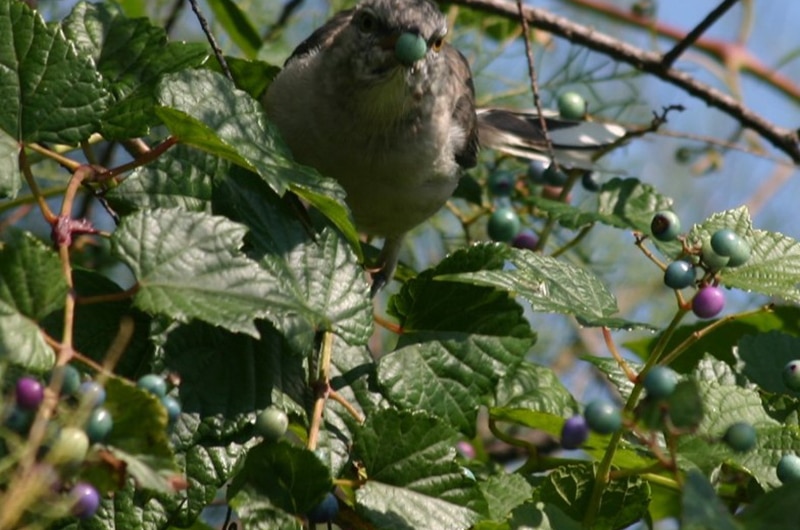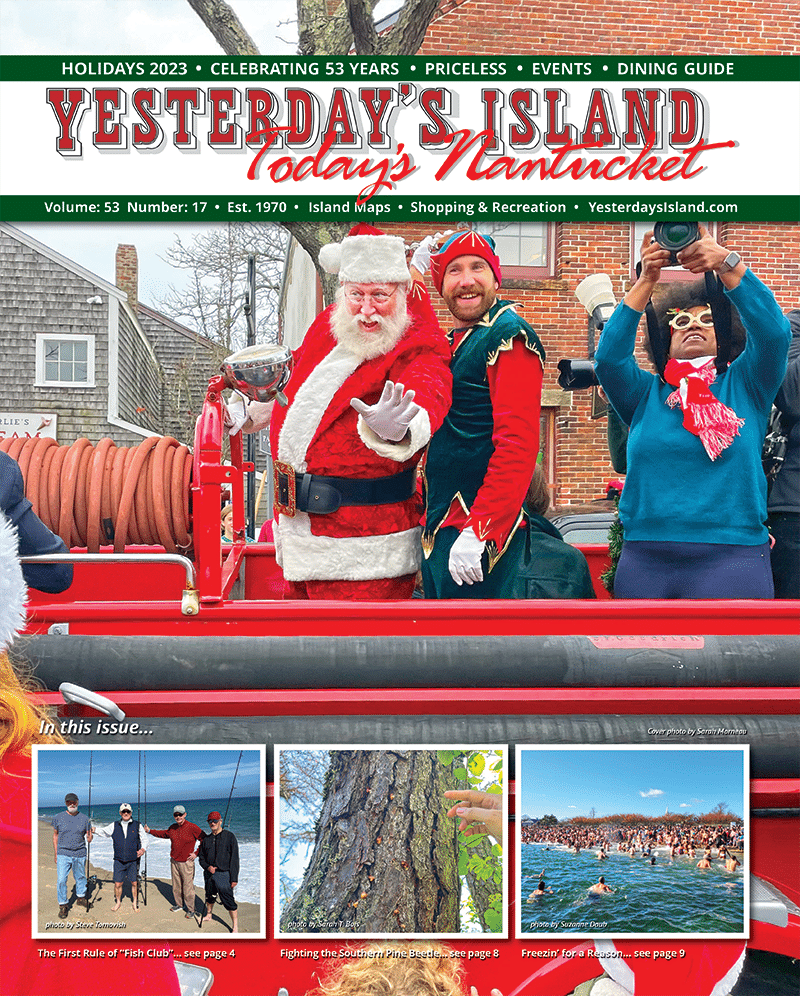by Dr. Sarah T. Bois, Director of Research & Education for the Linda Loring Nature Foundation

One of the things Nantucket residents and visitors agree on is the natural beauty of our island. The sandplain grasslands and coastal heathlands that make up much of the south coast, middle moors and west end are iconic native landscapes. Much of this land is under conservation and no longer threatened with development. However, they are at risk from incursions of non-native invasive species.
Invasive non-native plants are a force to be reckoned with. Between state, federal, and local agencies/organizations, you’ve probably heard or seen some mention of our worst invaders and possibly had to deal with them in your own yard. In my tenure working with invasive plants and educating the public, I find there are generally two camps of people; 1) those who worry about invasive plant impacts and may want to do something about it and 2) those who wonder why we care at all.
The term invasive can bring to mind many things. In this context, we mean plant species that are not native to Nantucket (or Massachusetts) and cause some kind of harm. That harm can be economic, ecological, or harmful to human health. In Massachusetts, they’ve created the Massachusetts prohibited plant list for species that have documented such harm. On Nantucket, our primary threats are to ecological biodiversity. Some obvious invaders, like Japanese knotweed dominate an area, shade out any other plants, and can change hydrology. Others, such as garlic mustard, a small biennial herb, are seemingly innocuous. However, they also cause harm by dominating in understory areas, outcompeting the natives. Garlic mustard is also allelopathic, secreting chemicals underground that deter other plants from growing near them. Invasive vines like oriental bittersweet and porcelain berry can grow up and over tall shrubs and trees. These vines can both shade out their host plants or strangle it as they slowly grow around it.

People often bring up poison ivy and green briar at this point, remembering other annoying and otherwise noxious plants. But these two are actually native to our area. As much as I hate poison ivy myself, it is a native species, so it doesn’t fall under the same category.
So what is Nantucket doing about the invasive species problem? For one, the Nantucket Biodiversity Initiative (NBI) created the Invasive Plant Species Committee (IPSC). The IPSC is a sub-committee of the NBI with a goal to identify, track, manage, and educate the public about the island’s non-native invasive plant issues. We organize group pulling events for plants like garlic mustard and spotted knapweed. We’ve worked with the Waste Options at the Nantucket Landfill to have an invasive-only disposal area. The IPSC also does a lot of education through various island events and schools. Keep an eye out on the IPSC website for the latest sightings, new species to be aware of, and the best practices for management and disposal.
What can you do? Manage your castle. For those of us living on-island, we can manage our own property (even if you rent) as if it was your castle as you were waging war on non-native invasive species. We have a “no tolerance” zone where anything invasive is pulled, clipped, and otherwise obliterated on-site and then disposed of properly.
You can join a pulling event in your neighborhood. Do you have a favorite walking spot with invasives? Ask the landowner how you can help (remember that all most conservation land on Nantucket is private property – NCF, NLB, LLNF, etc.)! They may advise pulling, they may already have a plan in place, or they may thank you for bringing a new population to their attention.
Tell your neighbors! You know how the saying goes: Good fences make good neighbors. Well, invasive plants make terrible neighbors. They don’t know where the property line is! If your neighbor has an issue, so do you. Need help talking to a neighbor? Contact the IPSC and we can help you with literature, terminology, and offer some friendly advice.
Go native! Another way to limit invasive plants is to increase native biodiversity. The IPSC and the Nantucket Land Council put together a guide to planting with natives on Nantucket. You can download a copy from this site angelfire.com/poetry/bridgewaterslam/NBI_IPSC2011.html or you can pick one up at your favorite conservation organization.
As an island, we have an opportunity to protect our landscapes from nonnative invasive species. Let’s not transport, plant, or propagate. Even if we all take that pledge, the birds will poop seeds, the wind will blow, and the ferries and planes will carry accidental introductions with them. We’ll just have to keep our eyes open.


